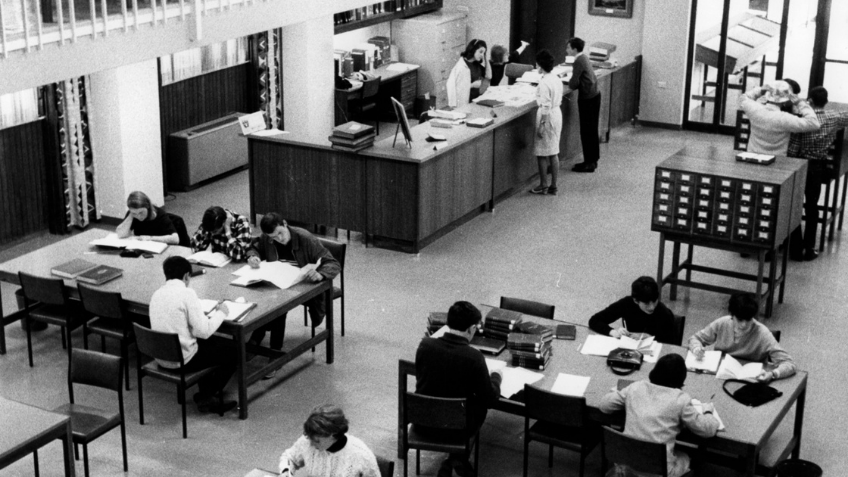Five tips for setting up your study space

Have you ever been sitting at your desk and suddenly realised you’re hunched over? Maybe you’re also squinting at your screen, and can feel a headache developing?
With all the time students spend sitting at a desk, absorbing as much information as possible, it’s important to ensure your study space is set up in a comfortable and safe way. This can not only relieve tension in your body, but also increase productivity!
Here’s five tips for setting up your study space for success.
Follow ergonomic design
Proper office ergonomics can help avoid strain on your neck, back and wrists. Here’s some adjustments to make at your desk:
- Adjust your chair so your feet rest flat on the floor, using a footrest for extra support if needed. Your thighs should be parallel to the floor, and the space under your desk should be free from clutter.
- Place important items, like your keyboard and mouse, close to your body to reduce excessive reaching. Your upper arms should stay close to your body and your wrists relaxed – use a wrist support if your desk has a hard edge.
- Place your monitor directly in front of you, about an arm’s length away. The top of the screen should be at or slightly below eye level.
Lighting
Keep your workspace well lit to avoid squinting at your screen. The brightest light source should be to the side of your monitor, rather than behind or opposite it (which results in distracting light glares).
Personalise your space
Your desk should be a place of inspiration! Stick images which trigger your creativity on the walls, play music if you’re able to still focus with it on, and add details like plants or candles to keep the space pleasant to be in.
Take regular breaks
As shared in Self-care tips for study success, regular study and exercise breaks have been shown to improve concentration, reduce anxiety and increase productivity.
Take regular small breaks of 3—5 minutes throughout the day to go for a short walk, stretch and stand up away from your desk.
Mix it up
Using different sitting postures adds variety and movement. Use changes in your tasks to change your posture, for example shifting from sitting straight up for computer work to leaning against the backrest for when you’re reading or thinking.
